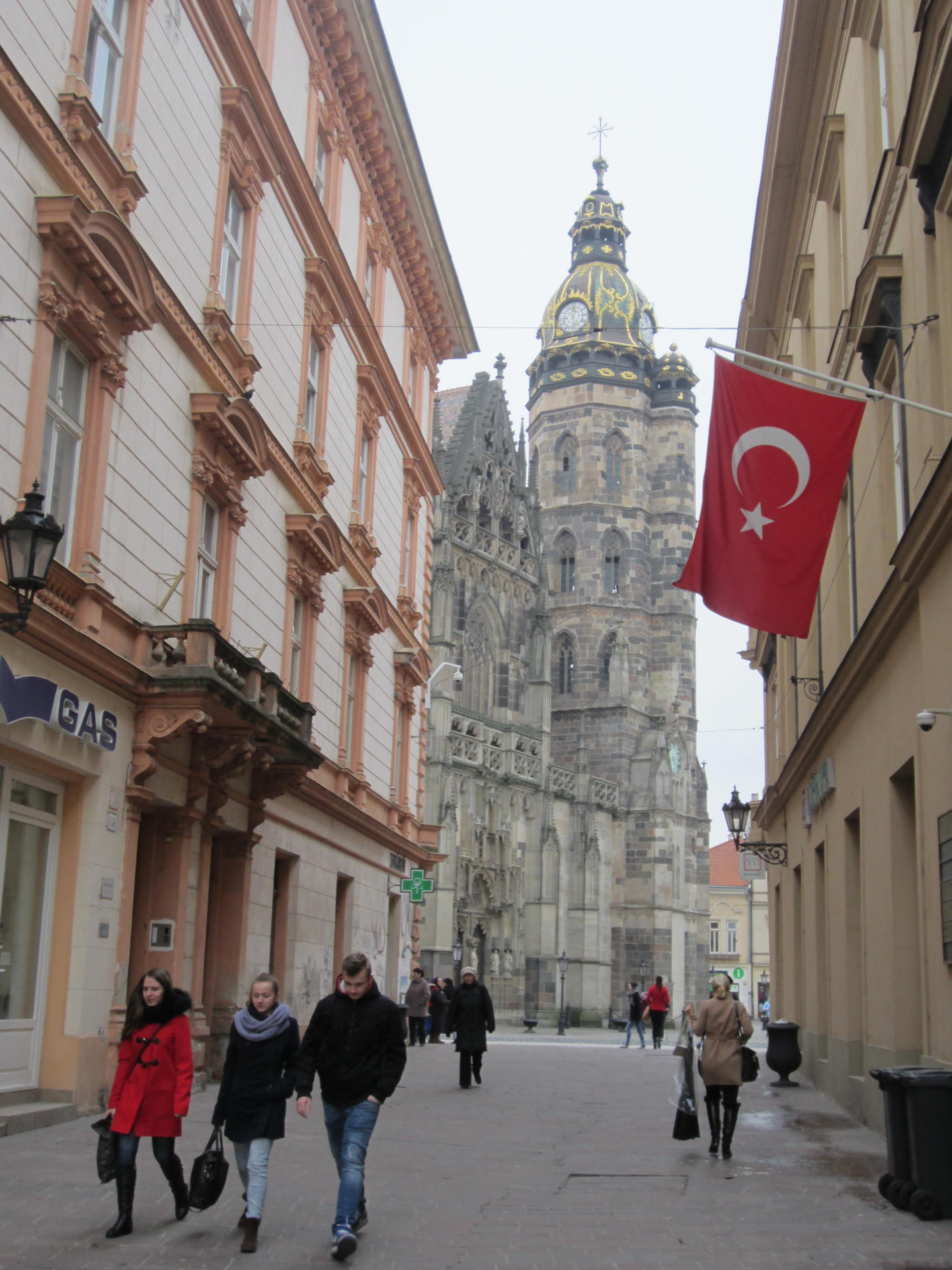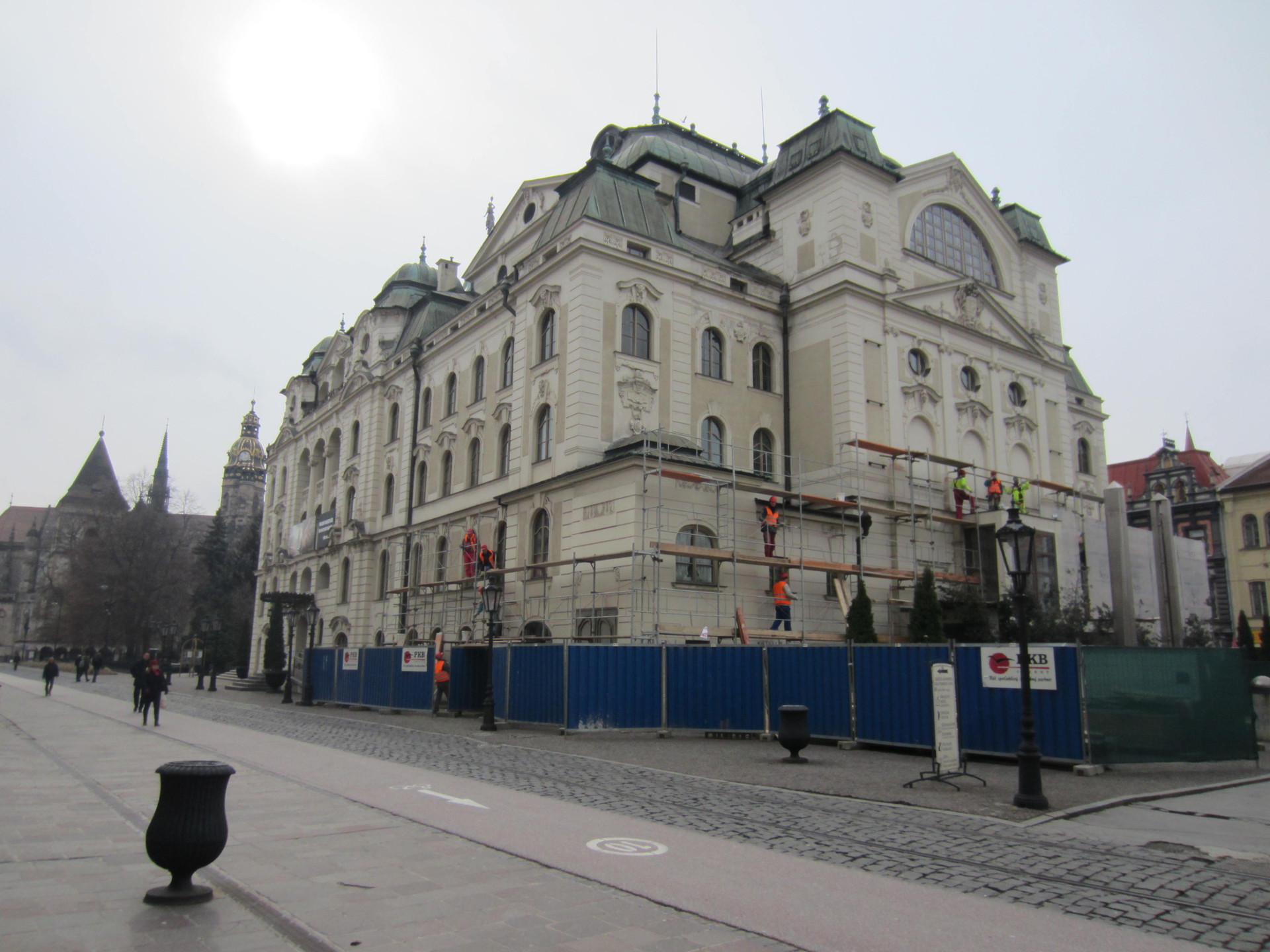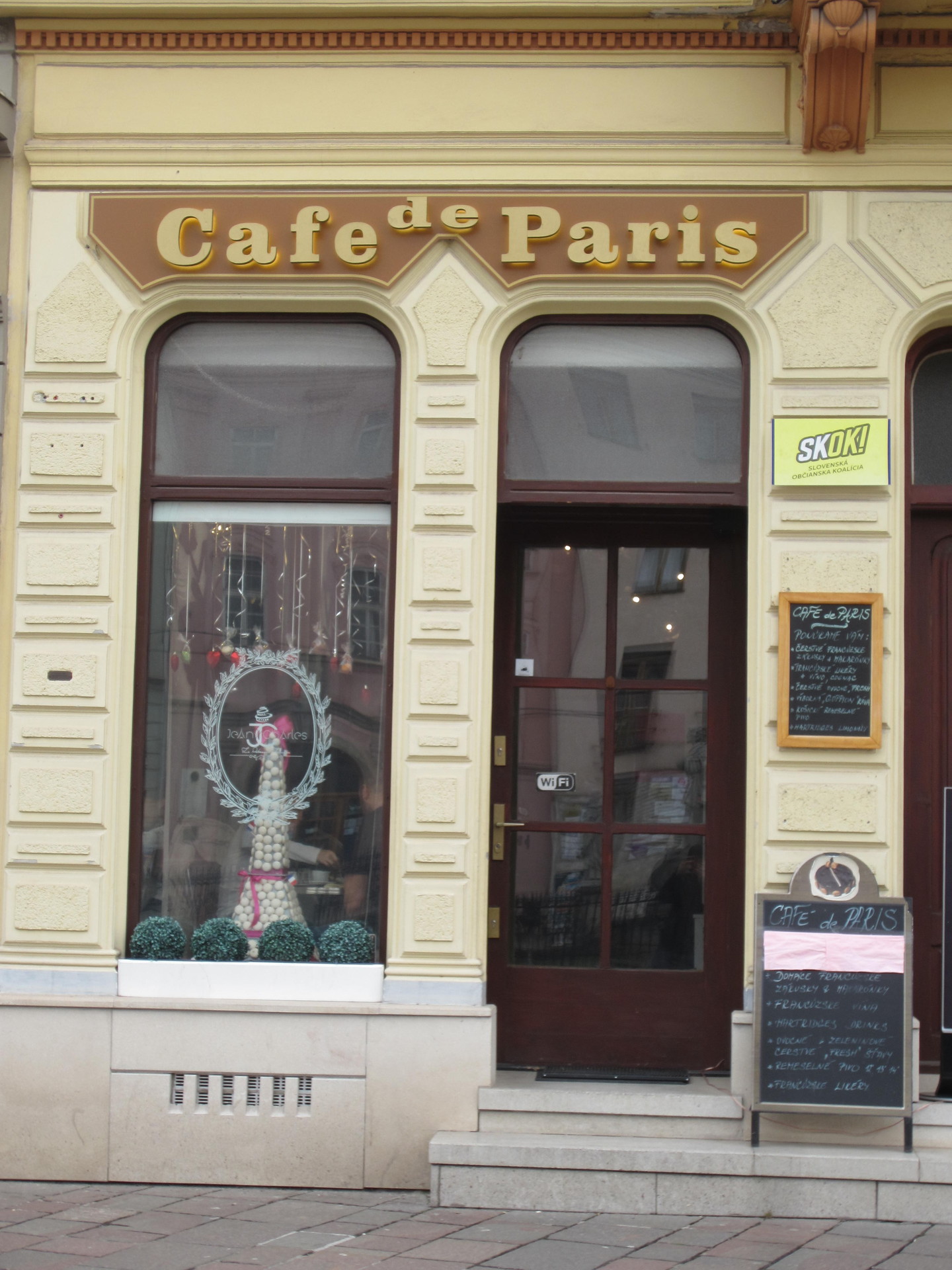Košice: capital of the East, enclave of France
25th February 2016
For eastern Slovaks, Košice is the big city (the second largest in the country, even with only 250,000 inhabitants). Young people here love Košice in the same way that the French from little remote villages cast envious eyes on the prefectures of their department.
Today I'm returning to this regional metropolis, ten days after seeing a piano concert by Valdo, head of ESN (the Erasmus association). It was in a bar, Bistro Tabacka, located in the disused premises of a red-brick factory, like those in northern France. Like me, Daniela (a supervisor) really liked the atmosphere, with its recycled furniture (barrels as chairs, crates as floor lamps). She confided: "If I lived in Košice, I would come here all the time, every day even, if I had the time". It's not for nothing that Košice was named the European capital of Culture in the same year as Marseille (2013).
A cathedral worthy of a capital

St Elisabeth Cathedral and its Rococo Dome Sigismund's Tower, from Mlynska Avenue.
From Prešov, my base, Košice is only 30 kilometres south. By train however, it takes me a painful hour. The Slovaks, who accompanied us on the day of the concert, complained expressly. For example, "The trains here really are a nightmare!" Simi exploded, as the carriage stopped for the third time in the middle of nowhere.
That February morning, the sun could hardly break through the altostratus cloud onto Mlynska alley, which connects the station to the historic centre. To endure the cold, I layered up my clothes.
St Elisabeth Cathedral (14th century) seems faded to me compared to the other evening when, becomingly lit with red and polished by the rain, its facade sparkled. I've not seen all the churches in the country, but I don't doubt that it is the biggest and most beautiful, as my guide claims. The cathedral of Bratislava, which I have visited, seems all the more modest in comparison. While going around that flamboyant, 1200m² Gothic colossus, I remain struck by its polished poly-chrome tiled roof and its doorway with the bas-relief of the Last Judgement.
The interior strikes a balance between the whiteness of the walls and the richness of the furniture. The narrow spiral staircase or pulpit looks like stone lace. I also stand in front of the face of the dozing virgin: the emerald eyes in the celestial void, the thin lips, the aquiline nose, the features puffy yet delicate at the same time. On leaving, at the foot of the Urban tower, like in Bardejov, the main feature is a five-tonne bell, made of fragments glued together. It has been the cathedral bell since 1557, before shattering in 1966, brought down by a fire at the bell tower.
Hlavna square, the heart of the city, is like a twin of that of Prešov, but more extensive. The columns, from the Plague to here, from the Immaculate to Prešov, rise in the same direction. These are the same facades, in shades of ochre, cream white, mint green, candy pink. The houses are from the same periods in Košice as in Prešov (the Renaissance, 18th, 19th centuries), just like Hotel Slavia with its Art Nouveau decor.

Restoration of the front of the National Theatre of Košice (1899), on Hlavna square.
At the back of the theatre (1899), which is falling to pieces in the middle, workers dressed in orange are as busy as ants on their scaffolding. They stand out even more because the main square is pale, as if they are in swamp that is blurred by the mist of its pools. And then, turning my head towards an adjacent street, I notice that the bars of the Communist era are never far away!
I had a traditional lunch, when it was barely midday, in an inn on Hlavna square, at 82. It is a rural setting, with wooden blocks as tables, stone benches and country objects hung over the walls in warm colours.
A little piece of France
For dessert, I head, still on the square, for café de Paris, which Simi had pointed out to me because "its owners speak French." So, I come to this little piece of France and choose a raspberry eclair in the bedecked window. I sit down with my coffee at a round table in the tastefully decorated room. I ask for Jean-Charles, the owner, who comes straight away.
Bent against the window, he considers me with his eyes framed by rectangular glasses. I say, "You speak French, then. " Tit for tat: "But of course I speak French; I come from Picardie! Four years ago, I arrived in Košice to open my French patisserie. I do everything myself. I used to be a pâtissier in France. " He comes to sit at my table, offering me a second cup of coffee. I am amazed at the boldness, at his age, of coming to live in such a place. His hair is still thick and brown, and his physique good.
"Non je ne regrette rien" sounds. "I play a little Piaf in the café and in the street to give it a little life. Sometimes, people stop, intrigued. " He leaves me for a few moments to put a plate of macarons at the foreign students' table. It is their first. "See, they don't even recognise macarons!"

Café de Paris, 75 Hlavna square, run by Jean-Charles from Picardie and his wife Monika
We chat. I tell him that I'm on an Erasmus stay in Prešov and that I have visited Košice. "Ah, it's dead! Ah, you've seen, you've quickly finished the tour! The square and worse... Prešov, pfft... it's the same! It's a bit like Bratislava, isn't it!" And like a flash of lightning: "No, but wait, hang on, if you want to go out, I'll show you where the shopping centres are." On his smartphone, he shows me the Max in Prešov and the Tesco in the centre.
Then his wife Monika arrives, with their seven-year-old daughter, who speaks French. "But then she is bilingual!" I marvel. "Yes," replies Jean-Charles, "she speaks Slovak, French, and then if she could learn a bit of English as well, that would be good!" I ask him if he knows other French people in Slovakia. There are only 2,000 in the whole country. "No, I leave them to their own devices."
However, he directs me to the Alliance Française, on the second floor of a candy pink shop opposite the café. "You can speak French there. And tell them Jean-Charles sent you." Work calling to him, we exchange emails for another potential sugary break. But, still trembling at having conversed with such a playful character, I forgot to take the piece of paper with me... Fortunately, I know the address.
Along with Bratislava and Banská Bystrica, Košice is the only city in the country that has a place promoting French language and culture. At Alliance Française, I meet a young Slovak student. She speaks French almost faultlessly in the light wood room. She explains to me that she worked on it by studying for a year in Strasbourg. So that I can meet francophones, she prints me off a webpage of their events in March and April. There is everything: photo exhibition in Paris, French dinner, films, writing competition, treasurer hunt... I hope to take part in some of them.
On a yellow wall, to the south of the big square, when I leave for the station, I notice a plaque at number 9. A priori, the name of Bela Gerster, who was born in that house, means nothing to me. Continuing reading, I say to myself that this is unfair: "Architect of the Corinthian canal (Greece) and co-architect of the Panama Canal." I remember this response from Jean-Claude Brialy: "When an artist is unknown, to make him known one says that he is famous."
Photo gallery
Content available in other languages
Want to have your own Erasmus blog?
If you are experiencing living abroad, you're an avid traveller or want to promote the city where you live... create your own blog and share your adventures!
I want to create my Erasmus blog! →




















Comments (0 comments)